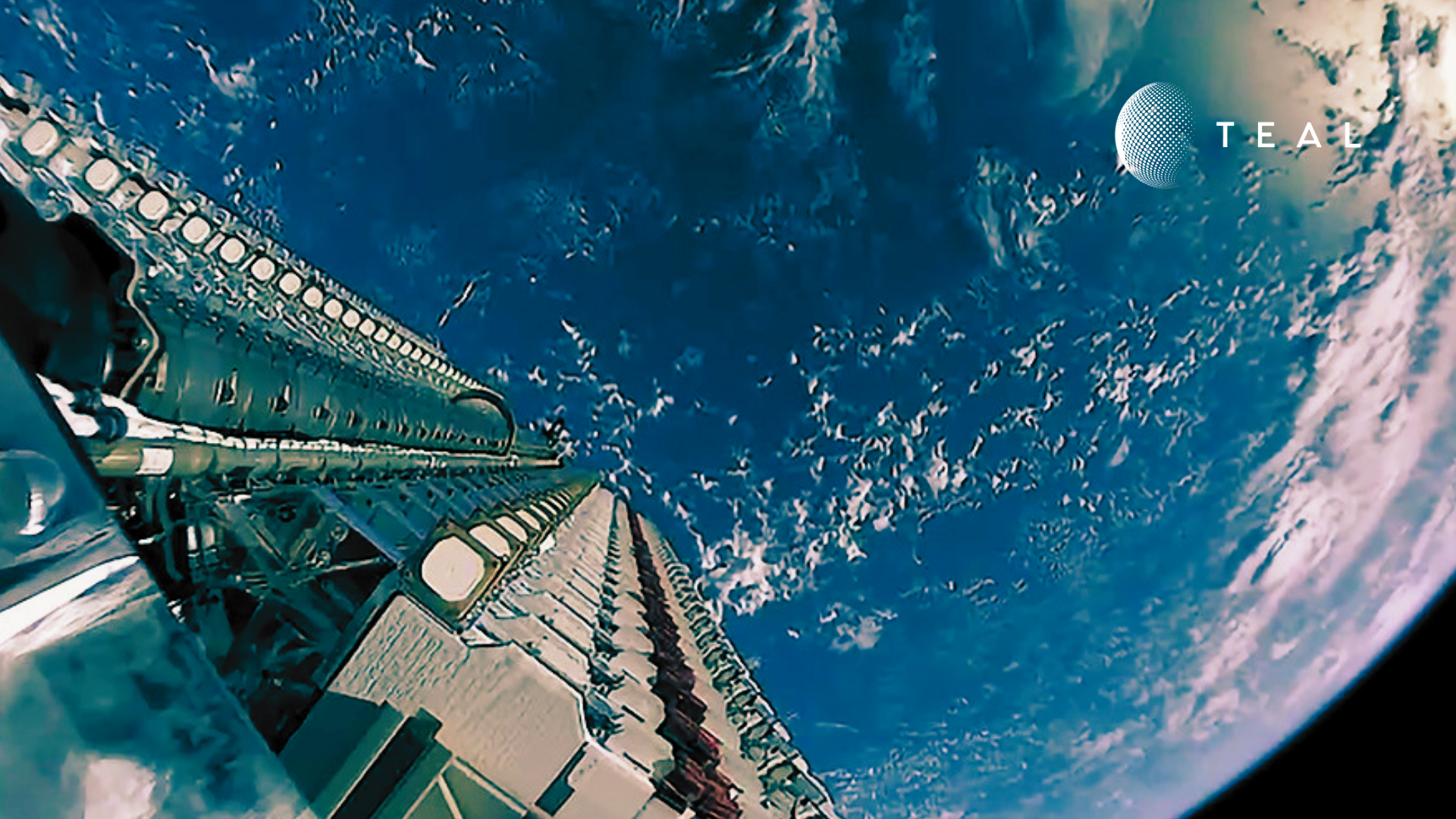The Rise of Satellite Direct-to-Cellular (D2C) and Direct-to-Device (D2D) Connectivity

The next wave of connectivity is here. With SpaceX recently securing FCC approval for its Starlink direct-to-cellular (D2C) partnership with T-Mobile and Apple making headlines for its $1.5 billion expanded deal with Globalstar to bolster iPhone satellite capabilities, the push for global satellite connectivity has taken another significant leap forward. These advancements aim to bridge connectivity gaps on a global scale, offering solutions where traditional cellular networks fail.

But what exactly is Direct-to-Cellular (D2C) and Direct-to-Device (D2D) technology? How does it work, and what does it mean for the future of connectivity?
What Is Satellite Direct-to-Cellular (D2C)?
D2C technology allows standard mobile phones to directly connect to satellites in space, bypassing traditional land-based cell towers. The result? Cellular service becomes accessible in remote, rural, or disaster-stricken areas that lack traditional network infrastructure.
Key Features of D2C Technology:
- Works with existing LTE phones without requiring special hardware or apps.
- Enables services like texting, calling, and basic data even where no cell towers exist.
- Relies on advanced satellite modems that act like cell towers in orbit.
A notable example is Starlink’s Direct-to-Cell Service from SpaceX. Their partnership with T-Mobile aims to provide direct-to-phone connectivity, effectively eliminating dead zones.
What Is Direct-to-Device (D2D)?
While similar in concept, D2D technology is designed specifically for IoT (Internet of Things) devices rather than smartphones. These IoT devices, like asset trackers and environmental sensors, gain satellite connectivity without any additional hardware or modifications.
Key Features of D2D Technology:
- Focused on IoT devices, including asset trackers, environmental sensors, and industrial equipment.
- Uses satellites to transmit data from remote or disconnected locations.
- Enables seamless integration between terrestrial and satellite networks.
By extending satellite coverage to IoT devices, D2D opens up new frontiers for industries like agriculture, logistics, and disaster recovery.
Real-World Applications of D2C and D2D
The true value of these technologies lies in their ability to address critical connectivity challenges.
1. Reaching Remote and Rural Areas
Building traditional cellular infrastructure in remote regions is costly and often impractical. D2C ensures that residents in rural areas can access reliable connectivity. For instance, remote workers or hikers could maintain communication through their phones without worrying about signal drop-offs.
2. Disaster Response
Natural disasters like hurricanes or earthquakes can cripple terrestrial networks, leaving affected areas disconnected. With D2C, emergency responders can maintain communication with minimal delays, while D2D ensures that critical IoT devices—like weather stations or flood sensors—continue to send life-saving data.
3. Asset Tracking and Supply Chain Optimization
For companies managing fleets or goods across vast geographies, D2D provides global asset visibility. Logistics companies can track shipments in real-time, improving efficiency and reducing losses.
4. Environmental Monitoring
D2D enables IoT devices like wildlife trackers or weather monitors to function in the most remote locations, making it essential for conservation and research efforts.
5. Agriculture
Farmers can use IoT devices to monitor crop health, soil conditions, and weather forecasts even in regions far removed from cellular coverage. This data can dramatically enhance resource management and improve yields.
Current Players and Market Developments
The competition in the satellite connectivity market is heating up, with major players driving innovation.
Satellite Providers:
- Starlink (SpaceX): Partnered with T-Mobile for D2C and exploring IoT capabilities.
- Globalstar: Bolstered by Apple’s deal to enhance direct-to-device services for iPhones.
- Amazon Kuiper: Preparing to launch its satellite constellation.
- AST SpaceMobile: Partnered with AT&T to expand mobile-to-satellite connectivity.
- Lynk Global: Focused on satellite-to-phone connectivity, especially for underserved regions.
- Dish Network and TerreStar: Exploring D2C/D2D solutions to complement their existing telecommunications footprint.
Carriers Investing in D2C/D2D:
- T-Mobile: Partnered with Starlink to offer global satellite connectivity for text, voice, and data.
- AT&T: Collaborating with AST SpaceMobile for global D2C services.
- Verizon: Exploring satellite ventures to supplement existing coverage, although specifics are still emerging.
Challenges on the Path to Mainstream Adoption
While the potential is enormous, implementing D2C and D2D technologies comes with challenges.
Technological Advancements
Scalability remains an issue. While we’ve seen successful trials from players like SpaceX and Lynk Global, ensuring reliable performance across vast geographies is still a work in progress.
Regulatory Approvals
Satellite frequencies require oversight from regulatory bodies like the FCC. These approvals take time and differ by region, slowing the rollout.
Infrastructure and Cost
Expanding satellite networks requires substantial investment, from building and launching satellites to deploying ground infrastructure.
Market Integration
Carriers and smartphone manufacturers must integrate this technology into their offerings. Educating consumers and businesses about its value will also play a significant role in adoption.
How Long Until D2C and D2D Become Mainstream?
Experts estimate it will take upwards 5 years for these technologies to achieve mainstream adoption. Early adopters in remote regions will likely benefit sooner, but urban and suburban users may need to wait until the necessary infrastructure scales and manufacturers incorporate satellite-ready technology into more devices.
How TEAL Supports the Future of D2D Connectivity
With our technology-agnostic approach, TEAL is uniquely positioned to facilitate seamless connections across public or private cellular networks and satellite networks. This flexibility allows TEAL to adapt to the evolving landscape of connectivity as more satellite and cellular providers embrace this cutting-edge technology.
TEAL’s ability to directly connect devices onto tier-1 carriers like AT&T, T-Mobile, and Verizon, as well as leading networks in over 196 countries, ensures secure and reliable always-on connectivity for solutions deployed globally.
With major players like SpaceX, Apple, and T-Mobile driving the innovation surrounding D2D, TEAL stands ready to play a pivotal role in this transformative shift. As the future of connectivity unfolds, TEAL’s robust infrastructure and commitment to seamless connectivity position it as a key enabler and partner in embracing the potential of D2D connectivity.
Book a Meeting
Recent Posts
CES 2026: The Connected Future, Through TEAL’s Lens
Teal Communications Staff2025-12-18T18:58:56+00:00
The Fastest Growing Company in the PNW isn’t an AI Startup… it’s TEAL
Teal Communications Staff2025-12-10T20:43:23+00:00
The Sky is the New Cell Tower: Satellites Are Reshaping the MNO Landscape
Teal Communications Staff2025-12-09T21:28:24+00:00




